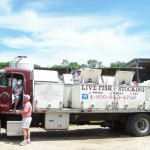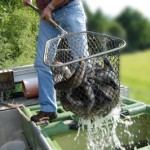Do you have enough hay stored to meet the needs of your cattle for the remainder of the winter? Even though you may have stored what you think will be enough hay to carry your herd through the winter, conditions often change so you might be concerned that you will run short before spring.
If you are worried about having enough hay on hand, Warren Gill, University of Tennessee Extension beef specialist, offers this formula to use to help estimate your available feed.
- Count the number of hay bales you have and, if possible, weigh a few to get an idea of their average weight. Multiply the number of bales by the average weight.
- During storage and feeding, you may lose 25 percent or more of large-package bales stored outside. Subtract this amount from the available feed.
- Calculate the number of animal units. Count a mature cow or bull as one unit, yearling cattle at a half unit and calves as a quarter unit.
- Determine the number of remaining total days you estimate you will need to use winter feed in your area.
- Figure each animal will eat 25 – 30 pounds of hay each day of average-to-good-quality hay with average wastage. Then, multiply your animal units times the number of days times the forage per day. Divide by the average weight of your bales to see how many bales you will need.
If you think your hay supplies will be inadequate and you need to obtain more, you can contact your university extension service or other sources for finding more hay or figuring suitable strategies for stretching your hay supply. State Agricultural Departments in major cattle producing areas also provide listings of where additional hay might be available for purchase.
Here are some reminders for storing the hay when you get it:
- Soil contact with hay is the most important source of spoilage of hay stored outside. Place bales on crushed rock, a concrete pad or wood pallets, if possible. If you can’t avoid storing hay bales on the ground, pick a well-drained area preferably with sandy soil.
- Storing bales near the top of a sloping area reduces the amount of water flowing around them. Bale rows should run up and down a sloping area to avoid trapping surface water.
- Store hay in a sunny location with a southern exposure. Never store under trees or other shady areas where drying can be slow.
- Bale rows should run north to south rather than east to west.


